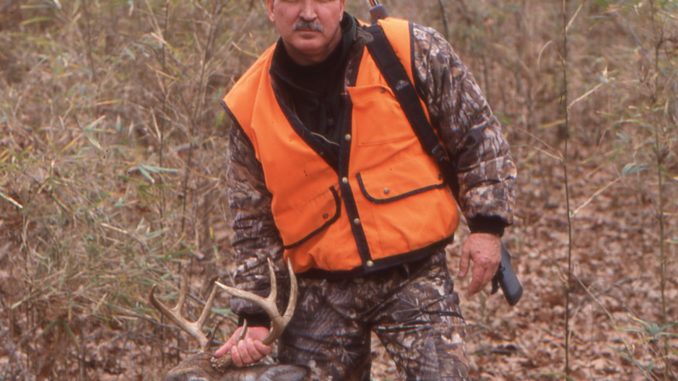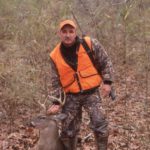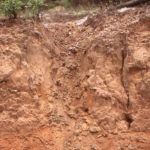
Deer season is slipping away, but these offbeat tactics may help you fill your tag and freezer as hunting time wanes.
Suddenly, you find yourself in December with no productive deer hunts to remember. October optimism has become December despair, and you are anxious to put venison in the freezer and a positive end to your season.
Most hunters have dealt with, at one time or another, a bad case of December doldrums. You passed on fat does early in the season, thinking there a big buck would be trailing behind. At the peak of the rut, you let decent bucks walk while assuring yourself that old mossyhorn was somewhere nearby. Then, all too quickly, you are in the season’s final weeks and deer seem to have become almost completely nocturnal. A sense of desperation begins to haunt you.
It’s a common, understandable scenario sooner or later faced by most serious hunters. Fortunately, there are things you can try, mostly of a decidedly offbeat nature, that just might mean tasty tenderloins and packages of venison burger are in the offing. Try these tactics as another deer year draws to a close.
• Still-hunting. A fine starting point involves turning back to clock to old-school tactics. Hunting from “on high” is a modern development. A half-century ago — as had been the case from the time the first stick-and-string guy stuck a deer — almost all dealings with whitetails involved still-hunting. Stands referred to places where someone stood in the course of a deer drive. Dogs, horses and a lot of hoopla were one approach, but over much of the country, deer hunters eased through the woods actively seeking their quarry rather than waiting for a whitetail to be driven to them.
Still-hunting does not involve staying still in one place. Rather, it finds the hunter easing slowly through the woods, doing more stopping and looking than walking. He is in effect taking the game to the deer. It works best after a rain, when the ground is soaked and it is possible to move in virtual silence. Constant alertness to movement, horizontal shapes where everything should be vertical, the flick of a tail, or even a grunt, is critical. Obviously, this is not a tactic suitable for public land or a hunt club with a number of members. Instead, it is a one-man, cover-the-ground, sneak-and-peek approach.
• Pay your dues through persistence. As South Carolina’s long season progresses, whitetails become increasingly nocturnal, especially in areas where there is considerable hunting pressure. That means the first and last hours of the day tend to produce the most action, but hunting only in low-light conditions can be a mistake. Even bedded deer get up and move about a bit sometime during the day, and the hunter who toughs it out from first light to night, showing toughness and persistence through long hours afield, can be rewarded. Obviously not all times of the day are equally productive in terms of deer sightings, but if you have the time and determination to hunt all day, particularly in the final two or three weeks of the season, it behooves you to do so.
• Unwitting allies. If you belong to a hunt club or spend time on areas of public land that get considerable pressure, there’s a corollary to all-day hunts worth keeping in mind. Often hunters leaving their stands in the morning or heading to them in mid-afternoon will move deer. Sometimes they jump them and are aware of what has happened, but more frequently, it’s simply a matter of whitetails easing away from someone moving through the woods. If you are well settled in place, there’s a chance these spooked deer will come within range, meaning that another hunter has unknowingly done you a favor.
• Roads less travelled. Years ago, having heard game wardens talk about a fellow named Joe Scarborough, I struck up an acquaintance with the man. A veteran of three tours of duty in Vietnam, where he served as a sniper, he was exactly what you would expect of a man who served in that capacity and lived to return to his native heath. He was scary good in the woods — so much so that when you were walking through woods ahead of him you regularly found yourself looking back to see if he was still there. Obviously, superb woodsmanship skills served him wonderfully well when deer hunting, and not surprisingly, all of his hunting involved still-hunting.
What was most intriguing though, and he credited his consistent success to it, was where he hunted. While he did virtually all his deer hunting on public land, he made a point of covering considerable ground before he even thought about getting down to business.
“I like to be at least a mile from the nearest road,” he said, “and two miles or more is much better. The great majority of deer hunters never venture that far off the beaten path. They worry about getting lost, what they will do if they kill a deer, or the physical demands involved in getting back of beyond.”
Scarborough’s message, obvious though it might seem, is one no deer hunter should overlook. That is doubly true when time remaining in the season has dwindled to a precious few days and you still haven’t bagged a deer or maybe hope for something more than the doe you shot many weeks ago. Extra time and effort may be required, but rest assured, as Scarborough put it, “If you kill a really fine buck a long way from anywhere, you’ll figure out how to get him out of the woods.”
• Hunt improbable places. There are certain types of places deer hunters understandably avoid like the plague. Even though the tract of land where I do most of my hunting is small, honesty compels me to admit that 20 acres or so of it was virgin territory to me until three or four years ago. The reason was simple: while the area got plenty of whitetail business, as trails in and out of it clearly indicated, it was a veritable hell-hole of saw briars, blackberry briars, and tangled undergrowth. The thicket was an ideal bedding area for deer, and turkeys utilized for nesting as well, but for a hunter it was intimidating.
Matters likely would have stayed the same had not blood-trailing a wounded deer led me into the dense mess. In due time the buck was located, but along with that success came a revelation. Right in the middle of the thicket was a small area, embracing no more than an acre, that was fairly open. It was an old logging yard where scraps and slag had rotted to leave a clearing and a prime, albeit tight, place to watch for deer. Admittedly there were no trees for ladder stands, and getting a tripod in place and set up there would be a huge hassle. However, all around the opening’s edges are fine sites for ground blinds or “hides” suitable for a chair seat of the kind many turkey hunters use.
Some exploring, usually best done in late winter after the season ends, will often reveal similar spots: maybe a break in the middle of a thicket of cane, a point where several well-traveled trails come together or an elevated piece of ground that puts you in a strategic situation in the middle of a favored bedding area. It’s likely not the kind of situation you would want to utilize over most of the season, but towards the end, some disruption to whitetail patterns seems reasonable if it means a much higher likelihood of success. A long-time hunting buddy of mine made a regular practice of easing into such areas, and he frequently told of taking deer at almost point-blank range.
• Rabbit hunting for deer. There are numerous methods of driving deer, but if you have the luxury of being able to hunt where movement doesn’t interfere with fellow club members or those utilizing public land, there’s a close cousin to man drives of precisely the sort rabbit hunters once used with some regularity. A group of rabbit hunters would form a ragged line and work their way through likely cover trying to jump a rabbit. They then either shot it on the jump or, more likely, set a pack of beagles bugling on its trail. The technique was also a favorite with country boys who maybe had a couple of hours after school for a quick hunt alone or who perhaps had just wandered out on an old-fashioned mixed-bag hunt.
When it comes to deer, given the special circumstances, one man is probably best. Equipped with a shotgun loaded with buckshot, the idea is to jump a deer and make a quick snapshot. There are obvious downsides, although worrying about wounding and not finding the deer really isn’t high on the list. More than a dozen buckshot hurtling through the air at distances of 20 to 40 yards can be deadly. The biggest problem is that you don’t have time to decide whether you do or don’t want to shoot the deer. Reaction has to be instantaneous. Likewise, this isn’t a tactic to use where others hunt. But for the meat hunter it’s an option worth considering.
Most of these approaches are offbeat, some may seem almost bizarre, and none figure prominently in typical whitetail tactics. Yet they all have one important thing in common—they can get you in the game when normal practices fail.





Be the first to comment